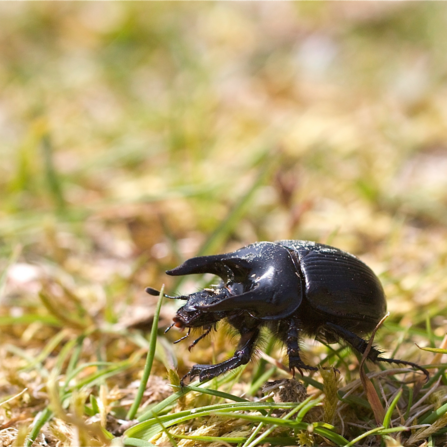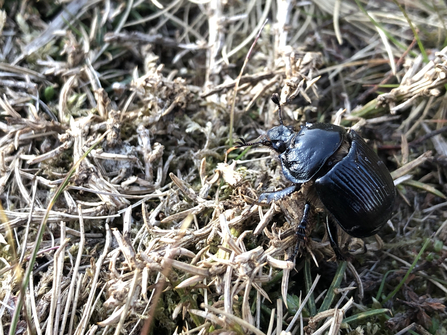At only 2cm in size, the Minotaur beetle is a mini yet mighty insect that plays a crucial role in maintaining healthy ecosystems.
These amazing beetles bury balls of dung from various herbivores, like rabbits and sheep, in underground burrows up to 1.5m deep. That’s a mighty feat for such a small beetle. It’s like a human digging a tunnel as deep as the Statue of Liberty is tall! Their burrowing helps air get into the soil and adds organic material, making the soil better at holding water and providing nutrients. Healthier soil, happier plants.


